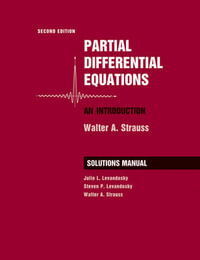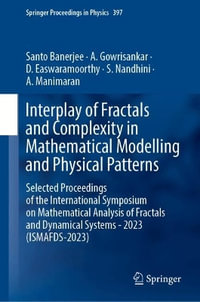
An Introduction to the Mathematical Theory of Dynamic Materials
Hardcover | 24 April 2007
At a Glance
Hardcover
$187.35
Aims to ship in 7 to 10 business days
ISBN: 9780387382784
ISBN-10: 038738278X
Series: Advances in Mechanics and Mathematics
Published: 24th April 2007
Format: Hardcover
Language: English
Number of Pages: 200
Audience: College, Tertiary and University
Publisher: Springer Nature B.V.
Country of Publication: US
Dimensions (cm): 23.39 x 15.6 x 1.27
Weight (kg): 0.46
Shipping
| Standard Shipping | Express Shipping | |
|---|---|---|
| Metro postcodes: | $9.99 | $14.95 |
| Regional postcodes: | $9.99 | $14.95 |
| Rural postcodes: | $9.99 | $14.95 |
How to return your order
At Booktopia, we offer hassle-free returns in accordance with our returns policy. If you wish to return an item, please get in touch with Booktopia Customer Care.
Additional postage charges may be applicable.
Defective items
If there is a problem with any of the items received for your order then the Booktopia Customer Care team is ready to assist you.
For more info please visit our Help Centre.
You Can Find This Book In
This product is categorised by
- Non-FictionMathematicsCalculus & Mathematical AnalysisDifferential Calculus & Equations
- Non-FictionEngineering & TechnologyOther Technologies & Applied SciencesApplied Optics
- Non-FictionEngineering & TechnologyMechanical Engineering & MaterialsMechanical Engineering
- Non-FictionMathematicsOptimisationLinear Programming
- Non-FictionSciencePhysicsElectricity
- Non-FictionEngineering & TechnologyElectronics & Communications EngineeringElectronics EngineeringElectronic Devices & Materials
- Non-FictionEngineering & TechnologyMechanical Engineering & MaterialsMaterials ScienceMechanics of SolidsDynamics & Vibration























